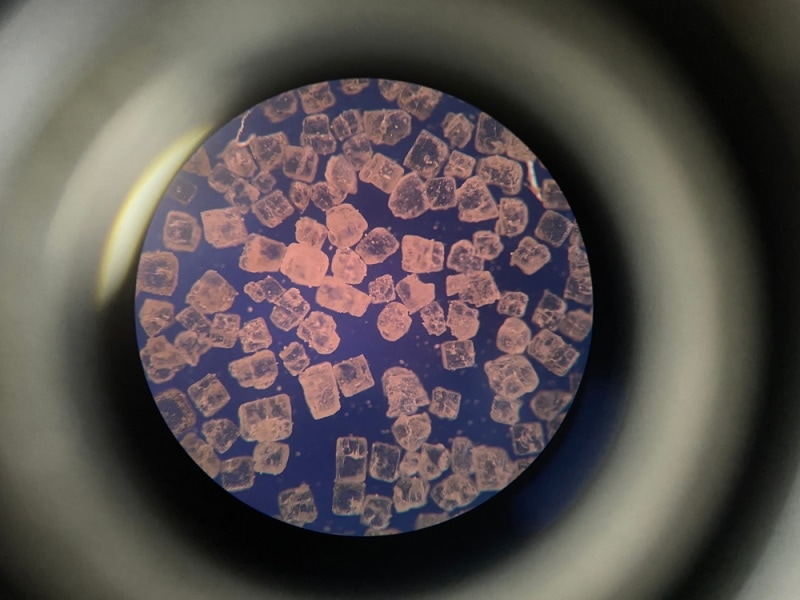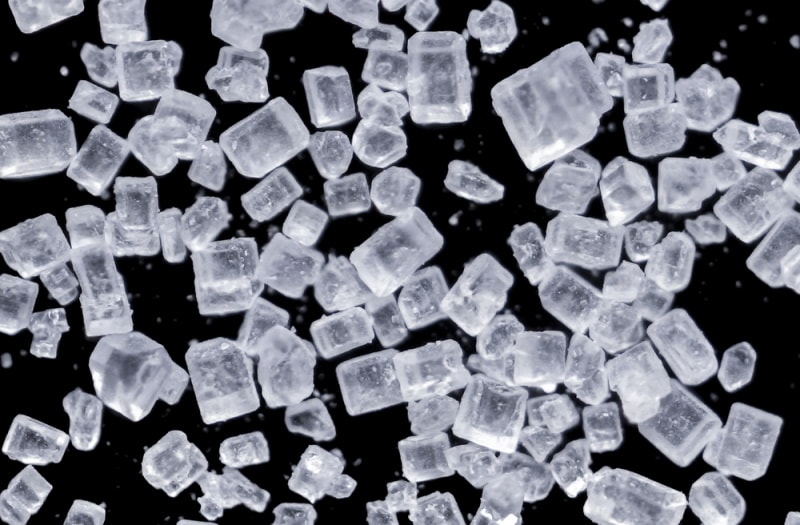What Does Salt Look Like Under a Microscope? (With Pictures)
Last Updated on

Recently, pictures of salt under an electron microscope have been shared on social media. Because these pictures showcase perfectly cubed specimens, these pictures have been met with a lot of skepticism and disbelief.
Even so, these pictures are authentic. When placed underneath an electron microscope, salt looks like something out of Minecraft – like small cube blocks. Scroll down to learn more about what salt looks like under a microscope.

What Does Salt Look Like Under an Electron Microscope?

To the naked eye, salt doesn’t look like much. At most, it looks like little pebbles or sand on the seashore. If you take a closer look at salt, the microscope unveils exactly what the salt looks like.
Fine table salt looks just like a cube. In fact, salt looks like the building blocks from the game Minecraft when looked at with an electron microscope.
That being said, not all salt technically looks like a cube. If coarse salt is inspected, it may look jagged and uneven. This uneven appearance is due to the fact the multiple layers of crystalized salt lay on top of one another. If you finely grind coarse salt, it will take on the cube appearance.
Something else to keep in mind is that salt will not look like a perfect cube with just any microscope. The perfect cube shape is seen by electron microscopes, which are fancy and expensive. Something like a magnifying glass will not produce the same effect because it is not powerful enough to reach the level of magnification required to seed the perfect cubes.
Why Does Salt Look Like Cubes Under a Microscope?
Most people are shocked to learn that fine table salt looks like cubes under a microscope. However, the nature of salt explains why salt takes on its shape. Salt is made up of molecules that are bonded together in crystal form. This bonding naturally takes on a cube-like shape due to the atomic structure of salt.
Once again, this cube-like shape only applies to fine table salt, such as the salt found on French fries. If you find coarse pieces of salt, it does not always look like a cube. Even so, coarse salt has the same structure as fine salt. If you grind down the coarse piece enough, it will resemble fine salt exactly.
Salt vs. Sugar Under a Microscope


To the naked eye, it can be difficult to tell salt from sugar. However, placing the two substances under a microscope will show that these substances look very different and take different crystal forms.
While salt generally looks like perfect cubes, sugar has more geometric shapes. Although sugar is still cubic-looking, sugar looks more like a hexagonal pillar. This different shape is due to the different atomic arrangements between sugar and salt.

Conclusion
When you look at fine salt under a microscope, it looks like cubes or building blocks. This cube is due to the atomic structure of salt. Although coarse salt may look different at first, you could grind it down so that it takes on this cubic shape.
Featured Image Credit: Piqsels
About the Author Robert Sparks
Robert’s obsession with all things optical started early in life, when his optician father would bring home prototypes for Robert to play with. Nowadays, Robert is dedicated to helping others find the right optics for their needs. His hobbies include astronomy, astrophysics, and model building. Originally from Newark, NJ, he resides in Santa Fe, New Mexico, where the nighttime skies are filled with glittering stars.
Related Articles:
Monocular vs Telescope: Differences Explained (With Pictures)
How to Clean a Refractor Telescope: Step-by-Step Guide
How to Clean a Telescope Eyepiece: Step-by-Step Guide
How to Clean a Rifle Scope: 8 Expert Tips
What Is a Monocular Used For? 8 Common Functions
How to Clean a Telescope Mirror: 8 Expert Tips
Brightfield vs Phase Contrast Microscopy: The Differences Explained
SkyCamHD Drone Review: Pros, Cons, FAQ, & Verdict
